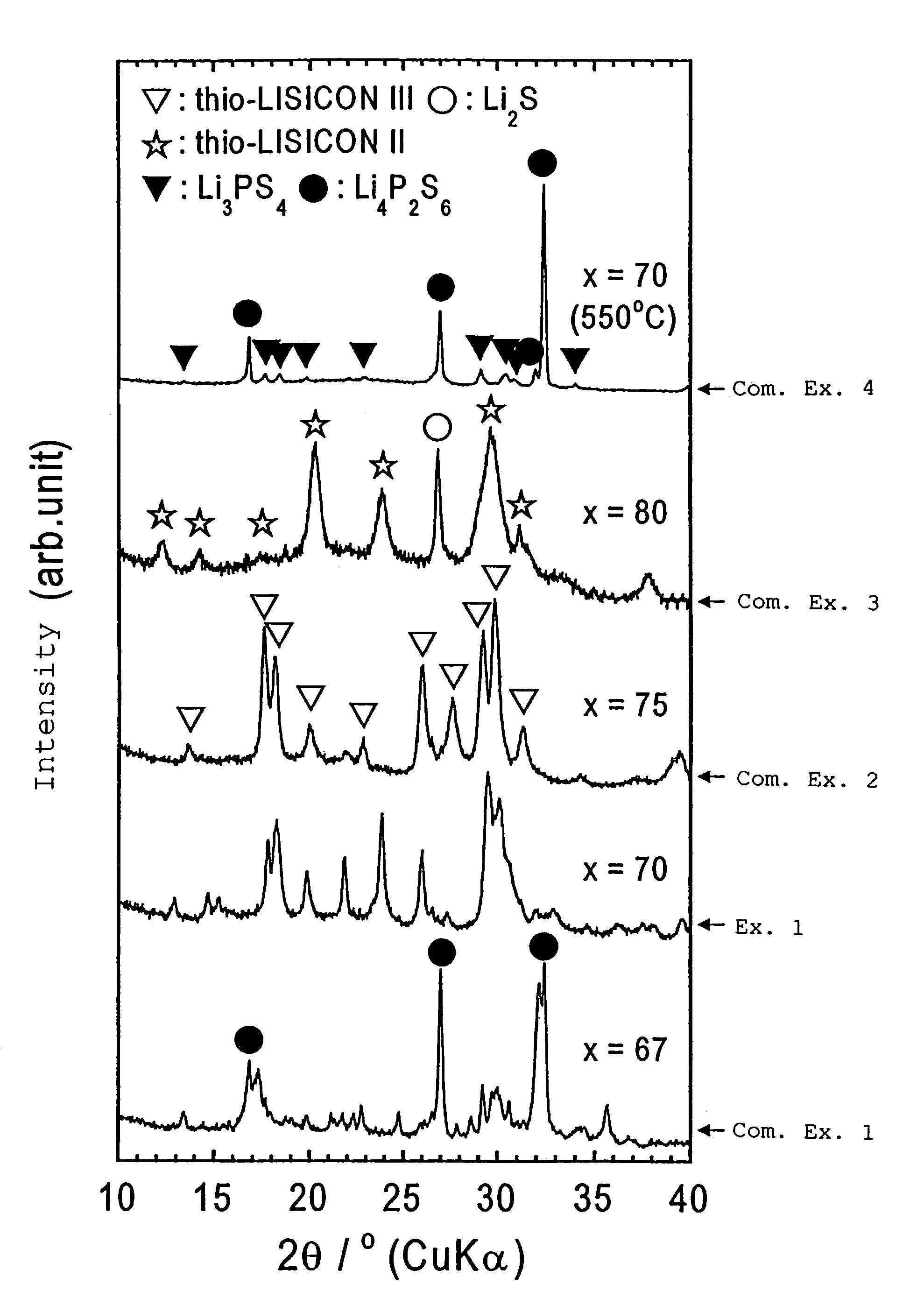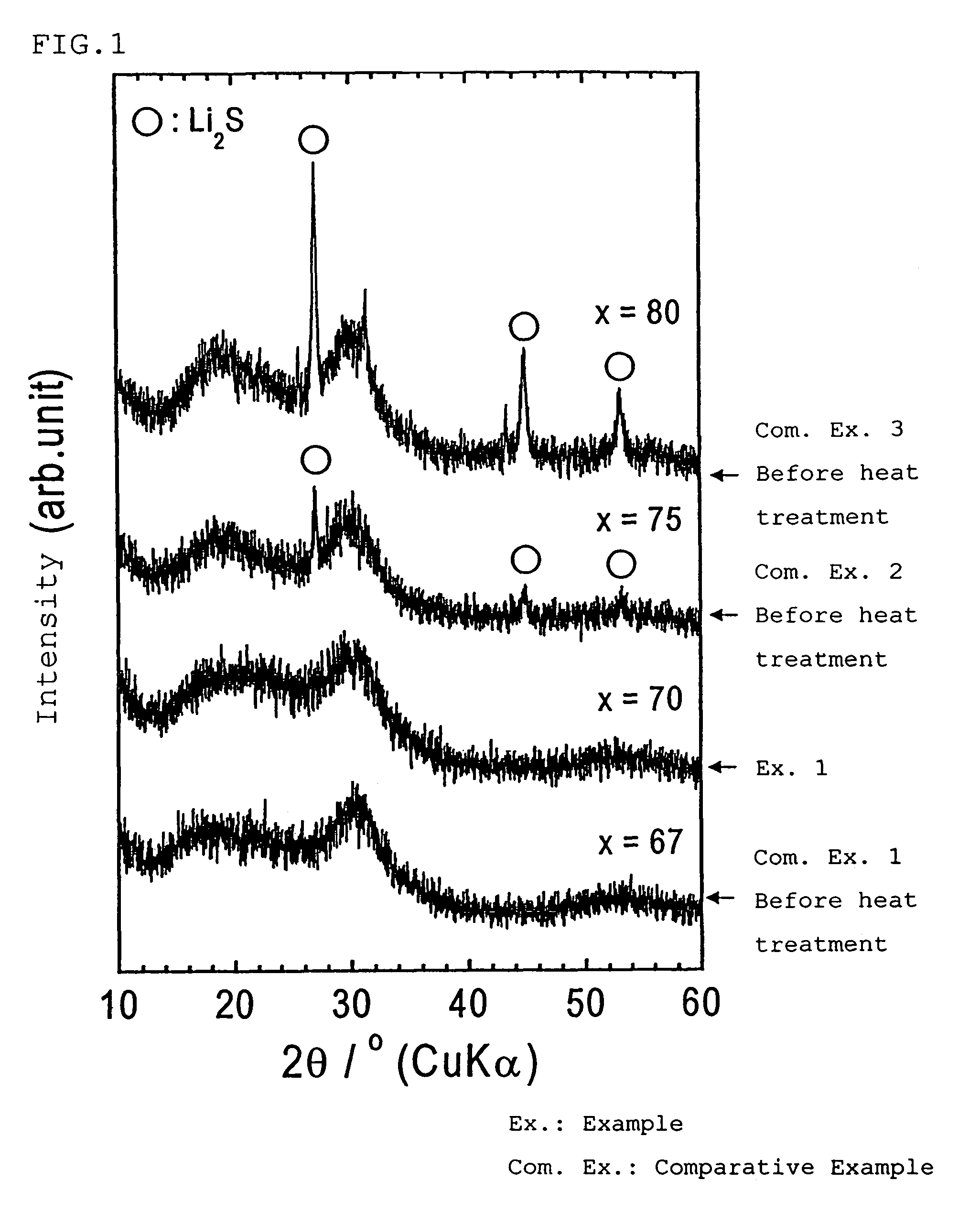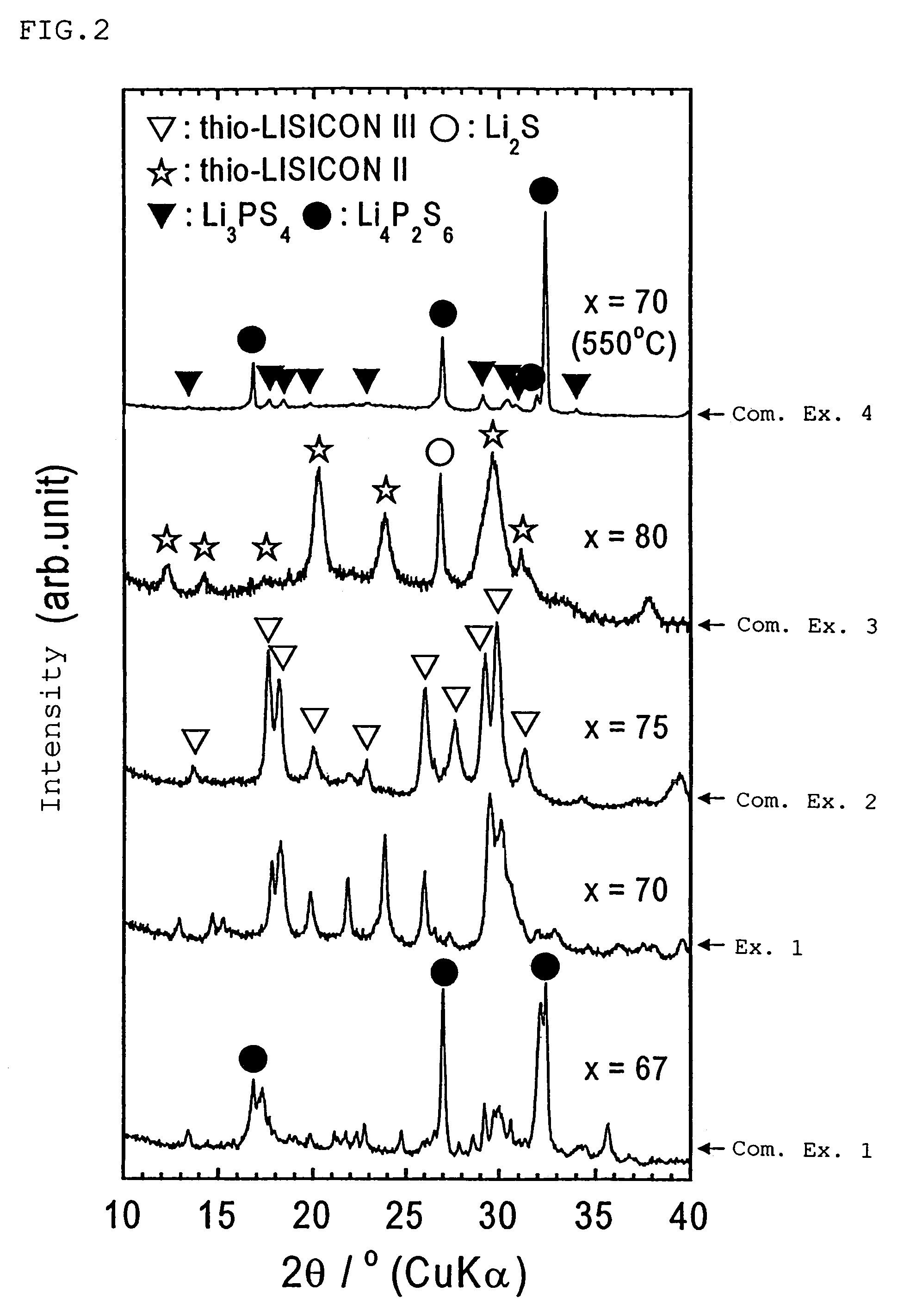Lithium ion conducting sulfide based crystallized glass and method for production thereof
a technology of lithium ion-conducting sulfide and crystallization glass, which is applied in the manufacture of cables/conductors, inorganic chemistry, conductive materials, etc., can solve the problems of leakage or ignition, inflammability of known organic electrolytic solutions, and limited lithium-ion-conducting properties at room temperature. , to achieve the effect of reducing the amount of li, reducing heat treatment temperature, and excellent economic benefits
- Summary
- Abstract
- Description
- Claims
- Application Information
AI Technical Summary
Benefits of technology
Problems solved by technology
Method used
Image
Examples
examples
[0052]The invention is described below in more detail by way of examples.
production example
(1) Production of Lithium Sulfide (Li2S)
[0053]Lithium sulfide was produced by a first aspect method (two step method) disclosed in JP-A-7-330312. Specifically, a 10-liter autoclave equipped with a stirring blade was charged with 3326.4 g (33.6 mol) of N-methyl-2-pyrrolidone (NMP) and 287.4 g (12 mol) of lithium hydroxide. The mixture was then heated to 130° C. with stirring at 300 rpm. Then, hydrogen sulfide was bubbled into the solution for two hours at a supply rate of 3 l / min. The temperature of the reaction solution was increased in a nitrogen stream (200 cc / min) to desulfurize and hydrogenate part of the hydrogen sulfide reacted. Water produced during the reaction between hydrogen sulfide and lithium hydroxide as a by-product started to vaporize as the temperature of the reaction mixture was increased. The water was condensed using a condenser and removed from the system. The temperature of the reaction mixture increased when water was removed from the system. The increase in t...
example 1
[0057]Li2S produced in the above production example and P2S5 (manufactured by Aldrich) were used as starting materials. About 1 g of a mixture prepared by mixing Li2S and P2S5 at a molar ratio of 70:30 and ten alumina balls having a diameter of 10 mm were placed in an alumina container (45 mL). The contents of the container were subjected to a mechanical milling treatment in nitrogen at room temperature (25° C.) and a rotational speed of 370 rpm for 20 hours using a planetary ball mill (“P-7” manufactured by Fritsch) to obtain sulfide-based glass as a white yellow powder.
[0058]The resulting powder was subjected to X-ray powder diffraction measurement (CuKα: λ=1.5418 Å). FIG. 1 shows the X-ray diffraction spectrum chart. FIG. 1 also shows spectra of Comparative Examples 1 to 3 described later.
[0059]Since the chart of the powder of Example 1 has a broad shape specific to an amorphous material, it was confirmed that the powder was vitrified (amorphized).
[0060]The powder (sulfide-based ...
PUM
| Property | Measurement | Unit |
|---|---|---|
| molar ratio | aaaaa | aaaaa |
| molar ratio | aaaaa | aaaaa |
| molar ratio | aaaaa | aaaaa |
Abstract
Description
Claims
Application Information
 Login to View More
Login to View More - R&D
- Intellectual Property
- Life Sciences
- Materials
- Tech Scout
- Unparalleled Data Quality
- Higher Quality Content
- 60% Fewer Hallucinations
Browse by: Latest US Patents, China's latest patents, Technical Efficacy Thesaurus, Application Domain, Technology Topic, Popular Technical Reports.
© 2025 PatSnap. All rights reserved.Legal|Privacy policy|Modern Slavery Act Transparency Statement|Sitemap|About US| Contact US: help@patsnap.com



